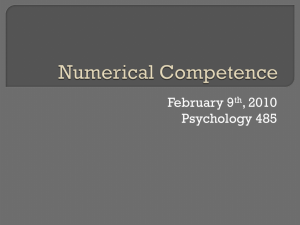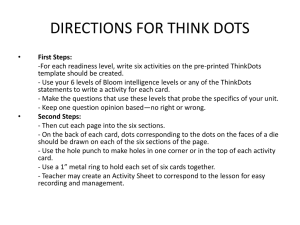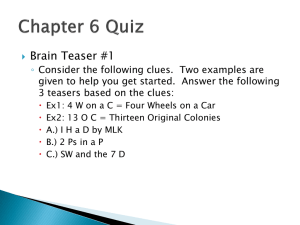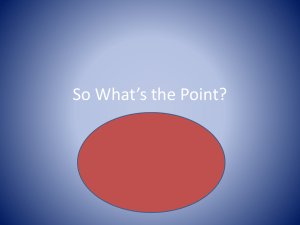Easy to use Incentive Systems - University of Wisconsin
advertisement
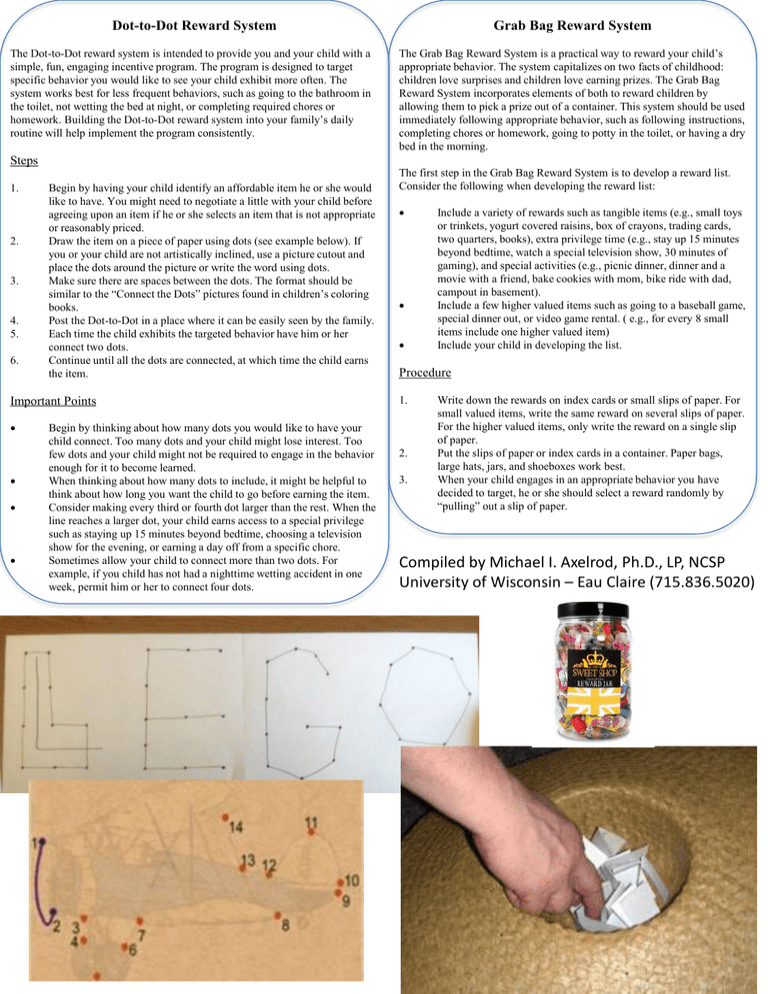
Dot-to-Dot Reward System The Dot-to-Dot reward system is intended to provide you and your child with a simple, fun, engaging incentive program. The program is designed to target specific behavior you would like to see your child exhibit more often. The system works best for less frequent behaviors, such as going to the bathroom in the toilet, not wetting the bed at night, or completing required chores or homework. Building the Dot-to-Dot reward system into your family’s daily routine will help implement the program consistently. Grab Bag Reward System The Grab Bag Reward System is a practical way to reward your child’s appropriate behavior. The system capitalizes on two facts of childhood: children love surprises and children love earning prizes. The Grab Bag Reward System incorporates elements of both to reward children by allowing them to pick a prize out of a container. This system should be used immediately following appropriate behavior, such as following instructions, completing chores or homework, going to potty in the toilet, or having a dry bed in the morning. Steps 1. 2. 3. 4. 5. 6. Begin by having your child identify an affordable item he or she would like to have. You might need to negotiate a little with your child before agreeing upon an item if he or she selects an item that is not appropriate or reasonably priced. Draw the item on a piece of paper using dots (see example below). If you or your child are not artistically inclined, use a picture cutout and place the dots around the picture or write the word using dots. Make sure there are spaces between the dots. The format should be similar to the “Connect the Dots” pictures found in children’s coloring books. Post the Dot-to-Dot in a place where it can be easily seen by the family. Each time the child exhibits the targeted behavior have him or her connect two dots. Continue until all the dots are connected, at which time the child earns the item. Important Points Begin by thinking about how many dots you would like to have your child connect. Too many dots and your child might lose interest. Too few dots and your child might not be required to engage in the behavior enough for it to become learned. When thinking about how many dots to include, it might be helpful to think about how long you want the child to go before earning the item. Consider making every third or fourth dot larger than the rest. When the line reaches a larger dot, your child earns access to a special privilege such as staying up 15 minutes beyond bedtime, choosing a television show for the evening, or earning a day off from a specific chore. Sometimes allow your child to connect more than two dots. For example, if you child has not had a nighttime wetting accident in one week, permit him or her to connect four dots. The first step in the Grab Bag Reward System is to develop a reward list. Consider the following when developing the reward list: Include a variety of rewards such as tangible items (e.g., small toys or trinkets, yogurt covered raisins, box of crayons, trading cards, two quarters, books), extra privilege time (e.g., stay up 15 minutes beyond bedtime, watch a special television show, 30 minutes of gaming), and special activities (e.g., picnic dinner, dinner and a movie with a friend, bake cookies with mom, bike ride with dad, campout in basement). Include a few higher valued items such as going to a baseball game, special dinner out, or video game rental. ( e.g., for every 8 small items include one higher valued item) Include your child in developing the list. Procedure 1. 2. 3. Write down the rewards on index cards or small slips of paper. For small valued items, write the same reward on several slips of paper. For the higher valued items, only write the reward on a single slip of paper. Put the slips of paper or index cards in a container. Paper bags, large hats, jars, and shoeboxes work best. When your child engages in an appropriate behavior you have decided to target, he or she should select a reward randomly by “pulling” out a slip of paper. Compiled by Michael I. Axelrod, Ph.D., LP, NCSP University of Wisconsin – Eau Claire (715.836.5020)
